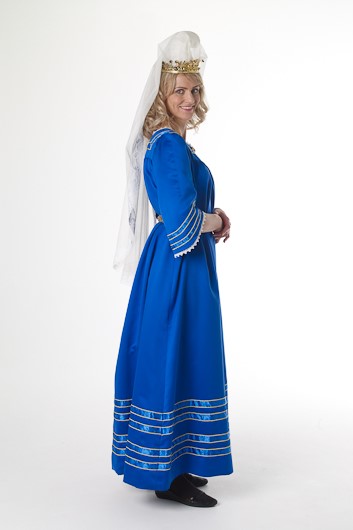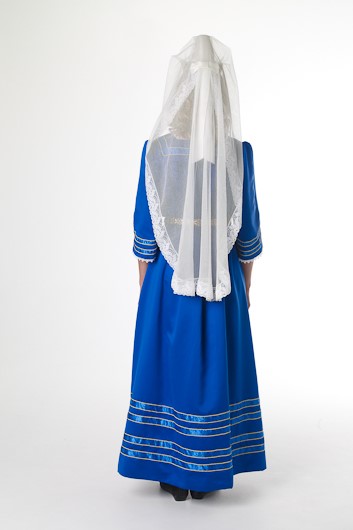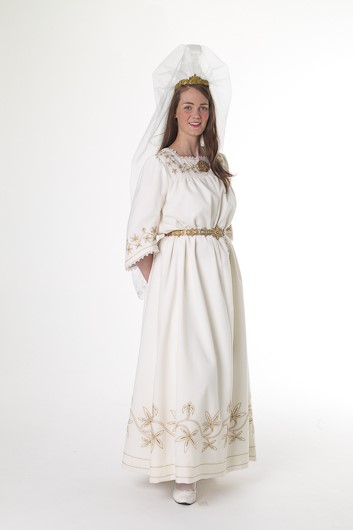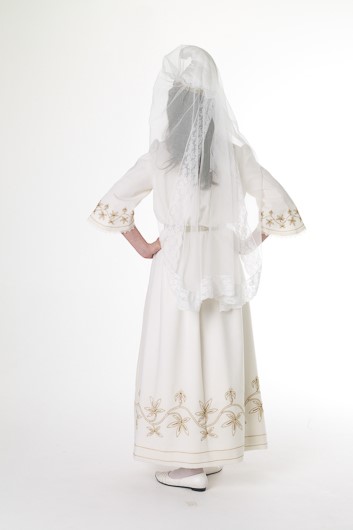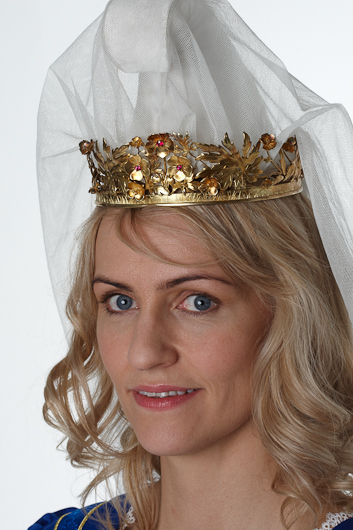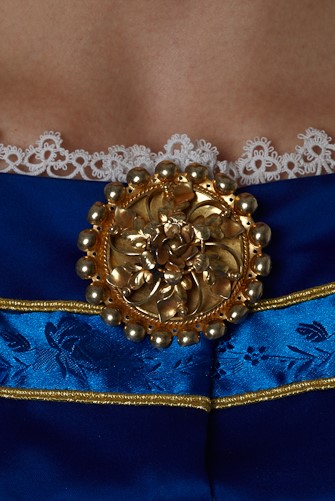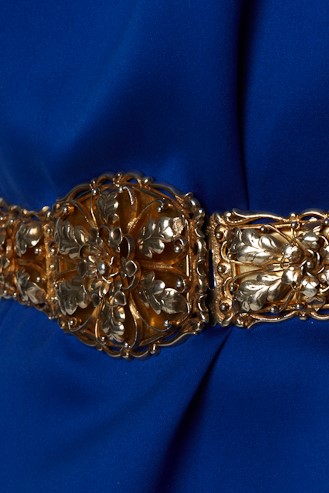Kyrtill costume
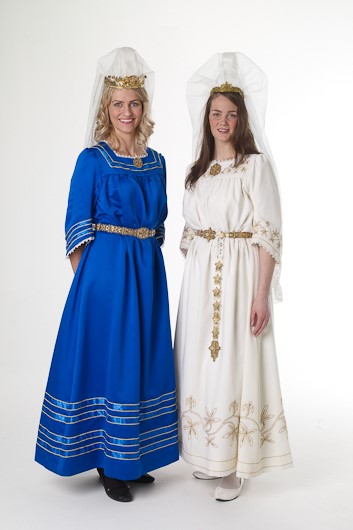 Sigurður the Painter was keen for women to adopt costumes in the Icelandic tradition for special occasions, and for that reason he designed the skautbúningur, followed by the kyrtill (kirtle) in 1870. The kirtle was popular for confirmations and weddings around 1900. It was a light and simple costume of silk, satin, cotton or thin woollen fabric, or occasionally velvet. Sigurður intended the kirtle to be white, but before long they were also being sewn in darker colours: blue, green and black. The kirtle was gathered beneath the yoke, front and back, with a square neckline. It was open at the front, with wide half-length sleeves. The neckline and sleeves were trimmed with lace. The yoke, sleeves and hem had decorative trim or embroidery; Sigurður the Painter designed embroidery patterns for the kirtle, inspired by Icelandic flora and traditional old motifs.
Sigurður the Painter was keen for women to adopt costumes in the Icelandic tradition for special occasions, and for that reason he designed the skautbúningur, followed by the kyrtill (kirtle) in 1870. The kirtle was popular for confirmations and weddings around 1900. It was a light and simple costume of silk, satin, cotton or thin woollen fabric, or occasionally velvet. Sigurður intended the kirtle to be white, but before long they were also being sewn in darker colours: blue, green and black. The kirtle was gathered beneath the yoke, front and back, with a square neckline. It was open at the front, with wide half-length sleeves. The neckline and sleeves were trimmed with lace. The yoke, sleeves and hem had decorative trim or embroidery; Sigurður the Painter designed embroidery patterns for the kirtle, inspired by Icelandic flora and traditional old motifs.
The costume was worn with the same headdress as the skautbúningur: the tall curved faldur, veil and bow, with a gilt fillet. The kirtle was worn with a silver brooch at the neckline, and a belt of metal links. The colour of shoes and stockings is chosen to complement the costume: light colours for a pale-coloured kirtle, otherwise black.


